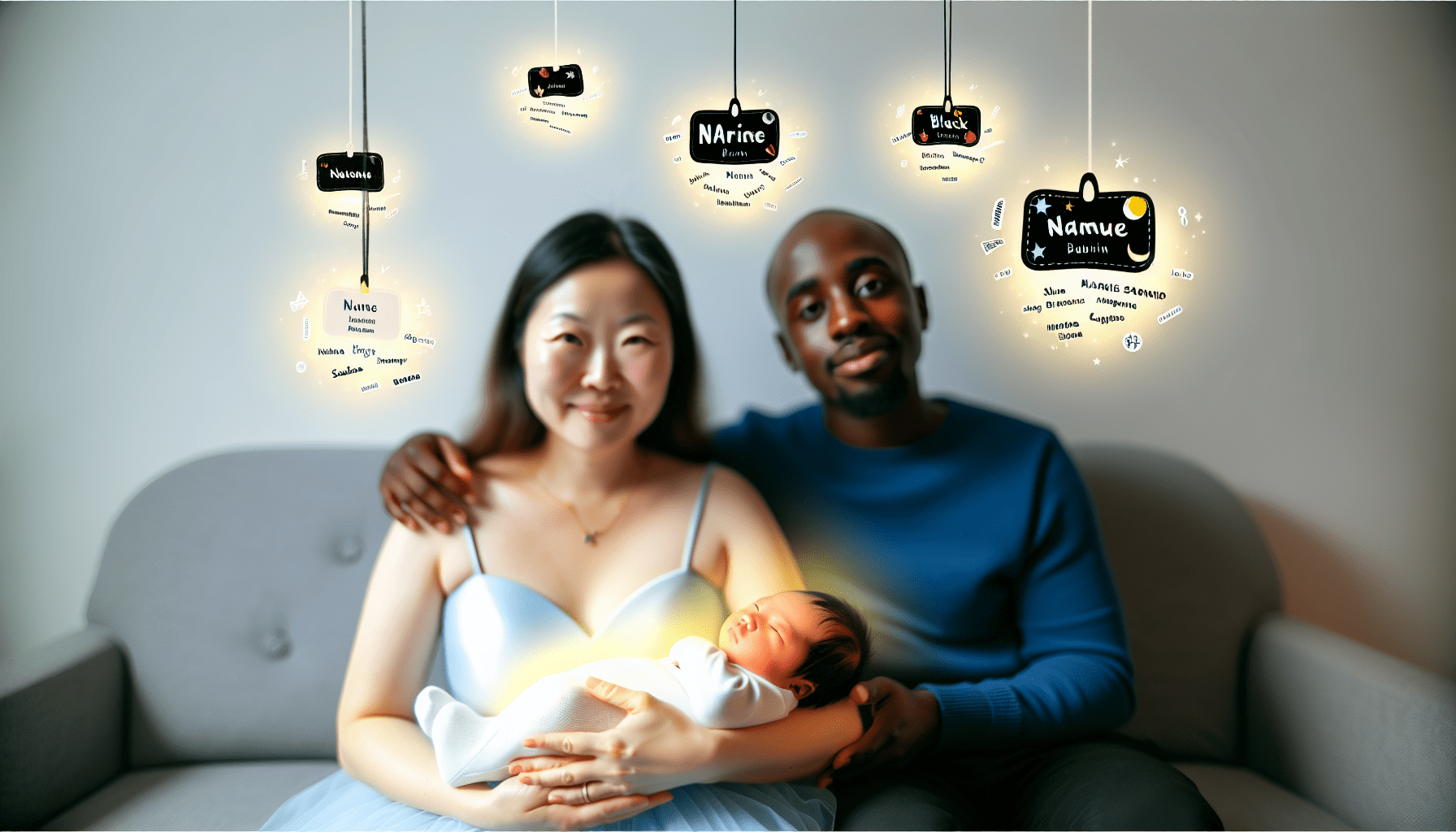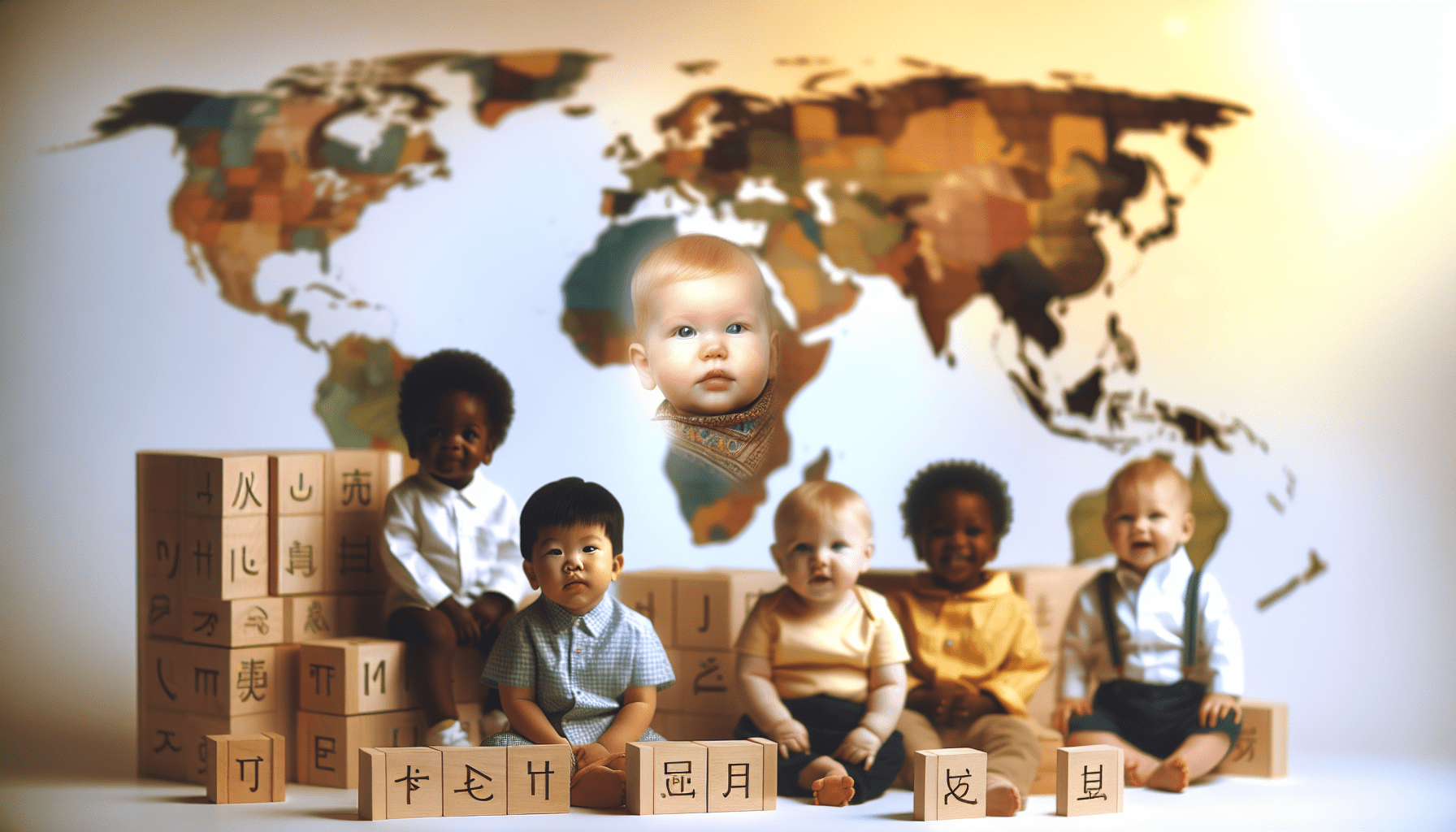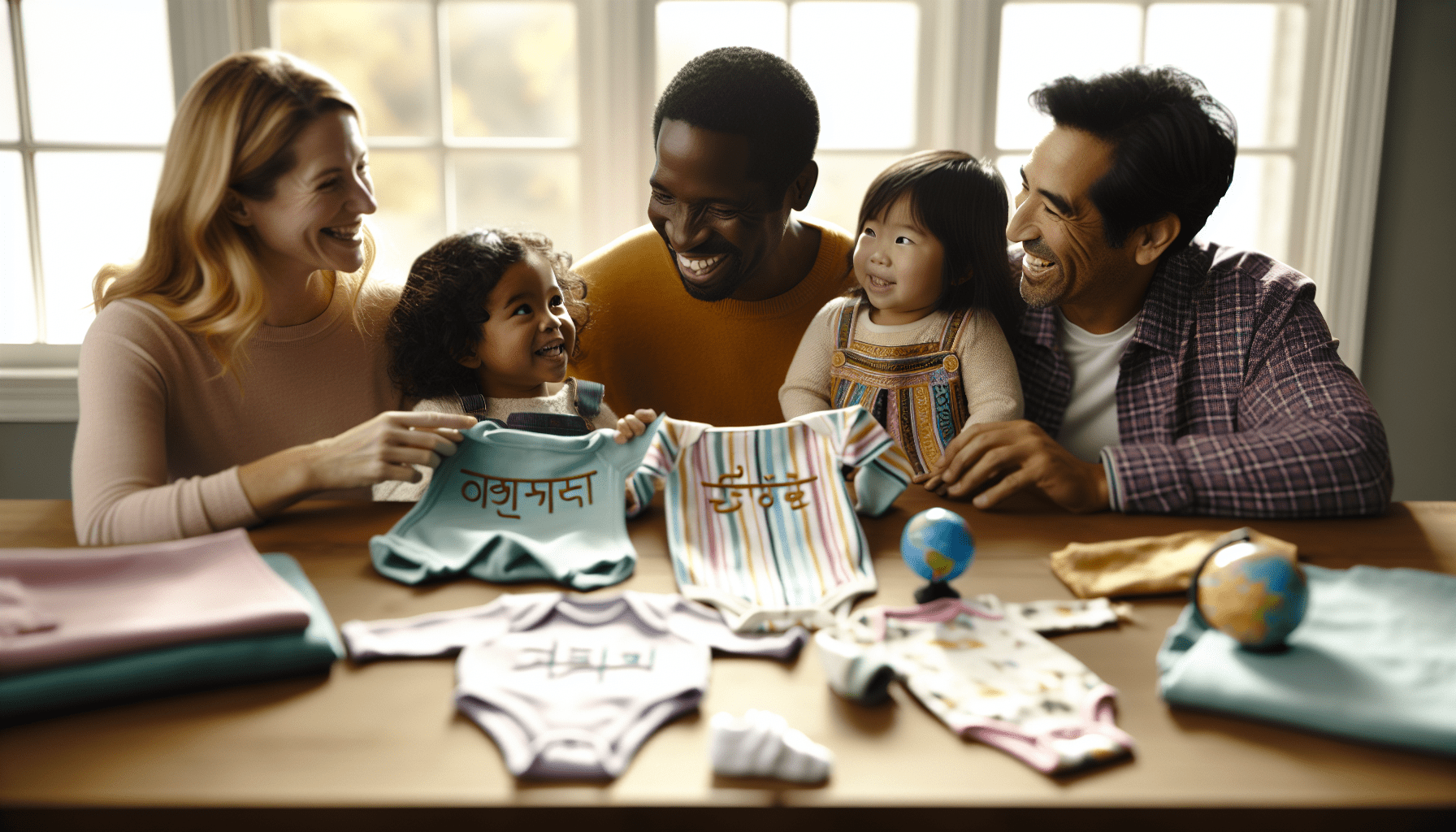
Baby names from around the world are a mirror of culture, migration and modern trends. This concise guide highlights top 2023–2025 trends, explains origins and pronunciations, and gives actionable advice for selecting a meaningful, usable name. Read on for verified regional lists, etymology insights, and practical steps to choose a name that fits your family and the digital age.
Global naming trends and statistics
Global naming trends and statistics (2025 overview)
Rising multicultural names, a revival of tradition, broader gender‑neutral choices, celebrity/social-media influence, and clear regional divergences define 2025. Internationally portable names (Noah, Olivia, Leo, Sofia) spread across markets, while local classics rebound (e.g., Gabriel in France, Leonardo in Italy). Nature, virtue, and short vowel‑heavy forms grow, and orthographic variants accelerate via global media.
Methodology
Compiled from Wikipedia entries that link to national statistics, and official registries (e.g., SSA US, ONS UK, INSEE France, GfdS Germany, SCB/SSB/Statistics Denmark, INE Spain, ISTAT Italy, ARPEN‑Brasil, RENAPO/INEGI Mexico where available, Meiji Yasuda Japan, Korea Supreme Court/Statistics Korea, China MPS, Stats SA). Cross‑country comparison is limited by differing release years, definitions (registered vs birth year), combined spellings, and diacritics/compound names.
United States 2023 (Source: Social Security Administration)
- Top girls: 1. Olivia 2. Emma 3. Charlotte 4. Amelia 5. Sophia 6. Mia 7. Isabella 8. Ava 9. Evelyn 10. Luna
- Top boys: 1. Liam 2. Noah 3. Oliver 4. James 5. Elijah 6. Mateo 7. Theodore 8. Henry 9. Lucas 10. William
Multicultural choices (Mateo, Luca-s) and vowel‑heavy, two‑syllable names continue to climb; classic anchors (James, Emma) remain stable.
England and Wales 2023 (Source: Office for National Statistics)
- Top girls: 1. Olivia 2. Amelia 3. Isla 4. Ava 5. Lily 6. Ivy 7. Freya 8. Isabella 9. Mia 10. Florence
- Top boys: 1. Noah 2. Muhammad 3. George 4. Oliver 5. Leo 6. Arthur 7. Oscar 8. Theodore 9. Henry 10. Freddie
Traditional staples (George, Henry) coexist with global hits (Noah, Olivia). Muhammad’s sustained rank reflects demographic breadth and consistent transliteration.
Canada 2023 (Source: Provincial registries aggregated via Wikipedia; latest provincial releases)
- Top girls: 1. Olivia 2. Emma 3. Charlotte 4. Amelia 5. Sophia 6. Mia 7. Isla 8. Chloe 9. Lily 10. Ava
- Top boys: 1. Noah 2. Liam 3. Oliver 4. William 5. Benjamin 6. Lucas 7. Theodore 8. Jack 9. Leo 10. James
Canada mirrors US/UK patterns with French‑English cross‑over (Chloé/Chloe, Léa/Lily variants) and enduring Anglo classics.
Australia 2023 (Source: State registries aggregated; McCrindle synthesis cited on Wikipedia)
- Top girls: 1. Isla 2. Amelia 3. Charlotte 4. Olivia 5. Ava 6. Mia 7. Matilda 8. Ella 9. Sophie 10. Grace
- Top boys: 1. Oliver 2. Noah 3. Leo 4. William 5. Henry 6. Jack 7. Theodore 8. Lucas 9. Thomas 10. Charlie
Short, bright vowels and nicknamey forms (Charlie, Theo) dominate; Matilda remains a distinctively Australian favorite.
Ireland 2023 (Source: Central Statistics Office)
- Top girls: 1. Grace 2. Emily 3. Fiadh 4. Lily 5. Sophie 6. Ava 7. Amelia 8. Ella 9. Mia 10. Lucy
- Top boys: 1. Jack 2. Noah 3. James 4. Rían 5. Daniel 6. Conor 7. Fionn 8. Liam 9. Oisín 10. Tadhg
Irish‑language names (Fiadh, Oisín, Tadhg) remain strong alongside international staples (Noah, Grace), signaling dual identity.
France 2022 (Source: INSEE; latest national table on Wikipedia)
- Top girls: 1. Jade 2. Louise 3. Emma 4. Alice 5. Ambre 6. Rose 7. Chloé 8. Mila 9. Lina 10. Juliette
- Top boys: 1. Gabriel 2. Léo 3. Raphaël 4. Arthur 5. Louis 6. Jules 7. Maël 8. Noah 9. Adam 10. Lucas
Classics (Louis, Juliette) and modern short forms (Léo, Maël) coexist; biblical names (Gabriel, Adam) remain prominent.
Germany 2023 (Source: Gesellschaft für deutsche Sprache – GfdS)
- Top girls: 1. Emilia 2. Sophia/Sophie 3. Emma 4. Mia 5. Hanna/Hannah 6. Mila 7. Lina 8. Ella 9. Klara/Clara 10. Lea/Leah
- Top boys: 1. Noah 2. Matteo/Matheo 3. Leon 4. Paul 5. Elias 6. Finn 7. Henry/Henri 8. Emil 9. Louis/Luis 10. Anton
Short, international forms (Noah, Emilia) dominate; spelling variants (Sophia/Sophie; Louis/Luis) affect counts.
Spain 2022 (Source: INE)
- Top girls: 1. Lucía 2. Martina 3. Sofía 4. María 5. Julia 6. Paula 7. Valeria 8. Emma 9. Alba 10. Daniela
- Top boys: 1. Hugo 2. Mateo 3. Martín 4. Lucas 5. Leo 6. Daniel 7. Alejandro 8. Pablo 9. Manuel 10. Álvaro
Traditional (María, Manuel) remain steady; Mateo/Martín show Latinized international rise.
Italy 2022 (Source: ISTAT)
- Top girls: 1. Sofia 2. Aurora 3. Giulia 4. Ginevra 5. Beatrice 6. Alice 7. Vittoria 8. Emma 9. Ludovica 10. Greta
- Top boys: 1. Leonardo 2. Francesco 3. Alessandro 4. Lorenzo 5. Mattia 6. Tommaso 7. Gabriele 8. Andrea 9. Riccardo 10. Edoardo
Historic saints/renaissance names (Francesco, Beatrice) persist; Leonardo is a long‑running leader.
Sweden 2022 (Source: SCB)
- Top girls: 1. Alice 2. Maja 3. Astrid 4. Vera 5. Wilma 6. Ella 7. Alma 8. Olivia 9. Selma 10. Ebba
- Top boys: 1. William 2. Liam 3. Hugo 4. Noah 5. Oliver 6. Elias 7. Theo 8. Lucas 9. Alexander 10. Nils
Nordic classics (Astrid, Nils) balance global favorites (Noah, Olivia).
Norway 2023 (Source: Statistics Norway)
- Top girls: 1. Nora 2. Emma 3. Olivia 4. Ella 5. Sofie 6. Leah 7. Maja 8. Ingrid 9. Frida 10. Ida
- Top boys: 1. Noah 2. Aksel 3. Emil 4. Oliver 5. Lucas 6. Filip 7. Jakob 8. William 9. Theodor 10. Henrik
Traditional Nordic (Ingrid, Henrik) remain; Noah and Olivia tie Norway to international currents.
Denmark 2023 (Source: Statistics Denmark)
- Top girls: 1. Alma 2. Freja 3. Clara 4. Nora 5. Ida 6. Josefine 7. Ella 8. Karla 9. Sofia 10. Agnes
- Top boys: 1. William 2. Noah 3. Oscar 4. Alfred 5. Carl 6. Oliver 7. Lucas 8. Malthe 9. Aksel 10. Emil
Short, old‑Nordic chic (Alma, Alfred, Aksel) remains highly fashionable.
Brazil 2023 (Source: ARPEN‑Brasil – Associação dos Registradores de Pessoas Naturais)
- Top girls: 1. Helena 2. Alice 3. Maria Alice 4. Laura 5. Maria Clara 6. Sophia 7. Valentina 8. Heloísa 9. Maria Júlia 10. Maria Cecília
- Top boys: 1. Miguel 2. Arthur 3. Gael 4. Heitor 5. Theo 6. Davi 7. Bernardo 8. Gabriel 9. Samuel 10. João Miguel
Compound “Maria +” forms and biblical/Latin names (Miguel, Davi) dominate; Gael and Theo reflect newer trends.
Mexico 2022 (Source: RENAPO via government communications; Wikipedia collation)
- Top girls: 1. Sofía 2. María José 3. Valentina 4. Regina 5. Camila 6. Ximena 7. Isabella 8. Victoria 9. Renata 10. Natalia
- Top boys: 1. Santiago 2. Mateo 3. Sebastián 4. Leonardo 5. Emiliano 6. Matías 7. Diego 8. Daniel 9. Miguel Ángel 10. Alexander
Spanish tradition with compound names (María José, Miguel Ángel) coexists with pan‑Latin favorites (Santiago, Mateo).
India 2023–2024 (Source: No national list; composite from large state registries cited on Wikipedia where available)
- Top girls: Examples reported across states include Aadhya, Anaya, Siya, Diya, Myra, Kiara, Aaradhya, Zoya, Sara, Ishita
- Top boys: Aarav, Advait, Vihaan, Arjun, Aditya, Vivaan, Reyansh, Mohammed, Kabir, Atharv
India lacks a single official national ranking; urban Sanskrit‑derived and Arabic names are prominent, with regional variation by language and religion.
Japan 2023 (Source: Meiji Yasuda Life Insurance; Wikipedia)
- Top girls (readings): 1. Himari 2. Yui 3. Aoi 4. Mei 5. Ema 6. Rin 7. Mio 8. Tsumugi 9. Hinata 10. Sakura
- Top boys (readings): 1. Haruto 2. Ren 3. Minato 4. Aoi 5. Hiroto 6. Itsuki 7. Yūto 8. Sora 9. Yūma 10. Riku
Nature imagery and gentle sounds (Himari, Aoi) lead; popularity varies by kanji combinations despite shared readings.
South Korea 2023 (Source: Supreme Court/Statistics Korea summaries on Wikipedia)
- Top girls: 1. Seo‑yeon 2. Ha‑yoon 3. Seo‑ah 4. Ji‑ah 5. Ha‑eun 6. Ji‑woo 7. Su‑ah 8. Ha‑rin 9. Chae‑won 10. Yu‑na
- Top boys: 1. Seo‑jun 2. Ha‑jun 3. Do‑yun 4. Si‑woo 5. Eun‑woo 6. Ju‑won 7. Ye‑jun 8. Ji‑ho 9. Yu‑jun 10. Min‑jun
Two‑syllable patterns with common morphemes (‑jun, ‑yoon, ‑woo) dominate; Hanja choice influences nuance.
China 2023 (Source: Ministry of Public Security; Wikipedia)
- Top girls: 1. Yinuo (一诺) 2. Zihan (子涵) 3. Xinyi (欣怡) 4. Shihan (诗涵) 5. Ziyu (梓妤) 6. Yuhan (雨涵) 7. Yutong (雨彤) 8. Xinyue (心悦) 9. Jiaqi (佳琪) 10. Yuxin (钰欣/雨欣)
- Top boys: 1. Yuxuan (宇轩) 2. Haoran (浩然) 3. Zihan (子涵) 4. Zeyu (泽宇) 5. Haoyu (浩宇) 6. Yichen (亦辰) 7. Zixuan (梓轩) 8. Zeyang (泽阳) 9. Chenxi (晨曦) 10. Ziyang (子洋)
Elegant, virtue‑laden characters (然, 诺) and cosmological motifs (宇, 辰) remain popular; homophones and character variants complicate aggregation.
Nigeria 2019–2023 (Source: No official national top‑10; indicative composite from state registries/media cited on Wikipedia)
- Top girls (indicative): Precious, Favour, Success, Grace, Mary, Deborah, Princess, Esther, Aisha, Fatima
- Top boys (indicative): David, Daniel, Emmanuel, Joshua, Samuel, Michael, John, Ibrahim, Mohammed, Joseph
Marked regional diversity: English virtue names and biblical names dominate in the south; Islamic names lead in the north.
South Africa 2023 (Source: Statistics South Africa – Recorded Live Births)
- Top girls: 1. Melokuhle 2. Amahle 3. Iminathi 4. Lethabo 5. Enzokuhle 6. Bokamoso 7. Karabo 8. Lesedi 9. Precious 10. Angel
- Top boys: 1. Liam 2. Lethabo 3. Junior 4. Lubanzi 5. Bandile 6. Siyabonga 7. Amogelang 8. Blessing 9. Kungawo 10. Melokuhle
Indigenous virtue/aspirational names (Melokuhle, Lethabo) rank highly alongside international (Liam), reflecting multilingual identity.
Cross‑border similarities and differences
- Globally rising: Olivia, Noah, Leo, Sofia/Sophia, Emma, Mateo/Matteo, Liam, Mia, Lucas, Amelia
- Highly localized: Melokuhle (South Africa), Ginevra (Italy), Lucía (Spain), Himari (Japan), Maël (France), Gael (Brazil), Tadhg (Ireland)
- Trends: Short vowel‑heavy forms; nature/virtue semantics; revival of vintage names; transliteration‑driven variants (Muhammad/Mohammed; Sofia/Sophia)
Glossary
- Given name/forename: Personal name assigned at birth/registration.
- Unisex: Used for any gender.
- Registration year: Year recorded by registry; may differ from birth year.
- Variant/orthography: Spelling differences counted separately or combined by source.
For the latest updates, consult national registries linked from each country’s Wikipedia “Most popular given names” page.
Meanings origins and pronunciation across cultures
Meanings anchor identity and travel across borders: a name’s root can signal virtues, deities, nature, or time of birth, yet shift by language (e.g., the same spelling may carry distinct senses). Knowing etymology and pronunciation avoids false assumptions and honors heritage while fitting daily use in multilingual communities.
- Sofia (Greek Σοφία)
- Wisdom
- Etymology: from ancient Greek sophía “wisdom”; long Christian use via Hagia Sophia; source: Wikipedia “Sophia (given name)”.
- Pronunciation: so-FEE-uh (English [soʊˈfiːə]); so-FEE-a (Spanish [soˈfia]).
- Variants: Sophia, Sofía, Sophie, Zofia, Sofia.
- Notes: widespread across Europe; typically feminine.
- Vladislav (Slavic Владислав/Władysław)
- Rule + glory
- Etymology: from Slavic vlad- “rule” + -slav “glory”; borne by medieval rulers; source: Wikipedia “Vladislav”.
- Pronunciation: vlah-di-SLAV (Polish [vwadiˈswaf], Russian [vlɐˈdʲisɫaf]).
- Variants: Władysław, Ladislav, Vladislaus; diminutives: Vladek, Lado.
- Notes: masculine; historic prestige in Central/East Europe.
- Amina (Arabic أمينة)
- Trustworthy, honest
- Etymology: from Arabic amīna; also mother of the Prophet Muhammad (Āminah bint Wahb); source: Wikipedia “Amina (given name)”.
- Pronunciation: ah-MEE-nah ([aˈmiːna]).
- Variants: Aminah, Ameena; male cognate: Amin.
- Notes: Muslim world; strong virtue name; feminine.
- Daniel (Hebrew דניאל)
- “God is my judge”
- Etymology: from Hebrew Dānīyyēl; biblical Book of Daniel; source: Wikipedia “Daniel (given name)”.
- Pronunciation: DAN-yəl (English [ˈdænjəl]); da-nee-EL (Hebrew [daˈni.el]).
- Variants: Daniël, Daniele, Daniil; diminutives: Dan, Danny, Dani.
- Notes: widely used in Abrahamic traditions; masculine, some modern unisex use via Dani.
- Arjun (Sanskrit अर्जुन)
- Bright, shining; white
- Etymology: from Sanskrit árjuna; hero of the Mahābhārata; source: Wikipedia “Arjuna”.
- Pronunciation: AR-joon ([ˈərdʒʊn]).
- Variants: Arjuna (Indic languages); diminutive: Aru.
- Notes: pan-Indian, Hindu cultural resonance; masculine.
- Míng (Chinese 明)
- Bright, clear
- Etymology: common given name element 明 “bright”; source: Wikipedia “Ming (name)”.
- Pronunciation: MEENG (Mandarin Míng [miŋ˧˥]).
- Variants: as first/second morpheme (e.g., Ming-wei, Anming).
- Notes: unisex in Chinese; tone matters for meaning.
- Sora (Japanese そら/空; Korean 소라)
- Sky (JP); conch/shell (KR)
- Etymology: Japanese “sora” 空 “sky”; Korean given name with distinct origin; source: Wikipedia “Sora (name)”.
- Pronunciation: SOH-rah (JP [soɾa], KR [soɾa]).
- Variants: JP kanji vary (蒼空, 天空); feminine in Korea, unisex in Japan.
- Notes: meaning shifts by language; modern, gentle sound.
- Kwame (Akan/Twi)
- Born on Saturday
- Etymology: Akan day-naming system; source: Wikipedia “Akan names” and “Kwame (name)”.
- Pronunciation: KWAH-meh ([ˈkwɑːme]).
- Variants: Kwamena (Fante); female counterpart: Ama.
- Notes: West Africa (Ghana); cultural calendar significance; masculine.
- Amani (Swahili/Arabic أماني)
- Peace (SW); wishes (AR)
- Etymology: Swahili “amani” ‘peace’ (from Arabic); Arabic amānī ‘wishes’; source: Wikipedia “Amani (name)”.
- Pronunciation: ah-MAH-nee (SW [aˈmani]).
- Variants: Amanee; used across East Africa and Arab world.
- Notes: unisex; virtue name with dual roots.
- Thabo (Sesotho/Setswana)
- Joy, happiness
- Etymology: Sotho–Tswana languages; source: Wikipedia “Thabo”.
- Pronunciation: TAH-boh ([ˈtʰɑːbɔ]).
- Variants: Thabo- forms (Thabiso related but distinct).
- Notes: Southern Africa; masculine; positive emotional virtue.
- Túpac (Quechua/Spanish Túpac)
- Noble, brilliant
- Etymology: from Quechua “Tupaq/Thupaq”; borne by Inca rulers; source: Wikipedia “Túpac (name)”.
- Pronunciation: TOO-pak (Spanish [ˈtupak]).
- Variants: Tupaq (Quechua orthography), Tupac (without accent).
- Notes: Indigenous Andean heritage; masculine; historic resonance.
- Kai (Multicultural: 海/甲斐/凯 etc.)
- Sea (Hawaiian/JP), victory (ZH 凯), more
- Etymology: multiple independent origins (Hawaiian ‘sea’, Japanese varied kanji, Chinese 凯/凱 ‘victory’); source: Wikipedia “Kai (name)”.
- Pronunciation: KAI (English [kaɪ]); JP [kai]; ZH Kǎi [kai̯˨˩˦].
- Variants: Cai, Kaj, Kay.
- Notes: global unisex; meaning depends on script.
- Noa (Hebrew נֹעָה; Japanese ノア)
- Motion (HE); phonetic use in JP
- Etymology: Hebrew Noa, a daughter of Zelophehad; distinct from male Noah; source: Wikipedia “Noa (name)”.
- Pronunciation: NO-ah (English [ˈnoʊ.ə]); HE [ˈno.a].
- Variants: Noah (male in many languages), Noa (f. in Israel).
- Notes: strongly feminine in Hebrew; unisex internationally.
Transliteration and scripts matter:
- Latin diacritics (Sofía/Sofia) may be dropped in some systems; check forms (see Wikipedia “Naming law”).
- Cyrillic: И/Й/Ы map differently (I/Y/Y); names vary (Daniil/Danil).
- Arabic: ʿayn/hamza (’/ʿ) and long vowels (ā/ī/ū) affect meaning (Amina vs Amīna).
- Devanagari: retroflex vs dental consonants and long vowels (ā/ī/ū) are often lost in English.
- Chinese: use Hanyu Pinyin (Míng), not older Wade–Giles (e.g., “Ming” vs “Ming” looks same; tones omitted outside Mandarin).
- Hangul: Revised Romanization (Seo, Seo-yeon) differs from McCune–Reischauer (Sŏ); keep consistent on documents.
- Do: learn the name’s native meaning and script; ask community members to confirm pronunciation; preserve diacritics where legally allowed; understand sacred/restricted names.
- Don’t: use names tied to living religious offices/clans without consent; alter sacred elements (e.g., remove honorifics) for style; assume cross-language equivalence by spelling alone.
Further research (Wikipedia):
- Given name; Onomastics; Etymology of names
- Sophia (given name); Vladislav; Amina (given name); Daniel (given name)
- Arjuna; Ming (name); Sora (name)
- Akan names; Kwame (name); Amani (name); Thabo
- Túpac (name); Kai (name); Noa (name); Transliteration; Naming law
How to choose a name in 2025
In 2025, smart name choices balance pronunciation across communities, resonant meaning, cultural respect, standout uniqueness, and a clean, positive digital footprint.
- 1. Define family values (heritage, faith, style, privacy).
- 2. Search authoritative lists: Wikipedia “List of most popular given names” (en.wikipedia.org/wiki/List_of_most_popular_given_names) + etymology pages.
- 3. Test pronunciation with speakers of English/Spanish/Arabic/Mandarin (or your local mix).
- 4. Check laws: Iceland’s Naming Committee (en.wikipedia.org/wiki/Icelandic_Naming_Committee), Denmark/Portugal/Sweden/New Zealand rules (en.wikipedia.org/wiki/Naming_law), Japan kanji limits (Jinmeiyō: en.wikipedia.org/wiki/Jinmeiy%C5%8D_kanji).
- 5. Practical checks: initials, nicknames, teasing, spelling.
- 6. Digital checks: search results, domain/handles, SEO uniqueness.
- 7. Longevity: works for child/teen/adult/professional.
- 8. Trial: say it in formal/casual settings for a week.
- Multicultural couple: Align values; scan Wikipedia + national lists (SSA: ssa.gov/oact/babynames, ONS UK: ons.gov.uk); shortlist Maya, Leo, Nia; pronunciation tests; legal OK; domain/IG check; decide.
- Privacy-focused: Seek uncommon, simple names; avoid heavy SEO footprints; shortlist Eira, Anouk, Mika; laws/kanji checks; register handles early; soft-launch at home.
- Maya — Sanskrit/Hebrew; global, easy, warm vowels.
- Leo — Latin; short, clear in many languages.
- Lina — Pan-European/Arabic; simple, familiar.
- Amir — Arabic/Hebrew; straightforward consonants.
- Nia — Swahili/Welsh; crisp, tri-letter.
- Zara — Arabic; recognizable, z-vowel pattern.
- Luca — Italian/Romance; phonetic, friendly.
- Noor — Arabic; one syllable, luminous meaning.
- Kai — Hawaiian/Japanese/Scandinavian; compact, cross-cultural.
- Aya — Arabic/Japanese/Hebrew; minimal, elegant.
- Changing a name? See Wikipedia “Name change” and your registry (e.g., Sweden’s Name Act: en.wikipedia.org/wiki/Name_law_in_Sweden).
- Middle vs first? Use middles to honor heritage while keeping an easy first.
- Respect vs appropriation? Seek consent/context-bearers; avoid sacred/offensive uses; follow script rules.
- Unisex picks? Choose widely used neutrals (Ari, Noa, Mika) and confirm local legal forms.
Use the regional lists, etymologies, pronunciation notes, and legal/digital checks above to finalize a shortlist you love—and register it confidently.
Conclusions
Choosing a baby name blends heritage, meaning and real-world practicality. Use verified regional lists and etymologies to inform choices, balance uniqueness with ease of pronunciation, and run digital checks for discoverability. Respect cultural origins and legal rules in your country. With the trends and tools in this guide you can select a name that honors family, works globally, and grows with your child.





